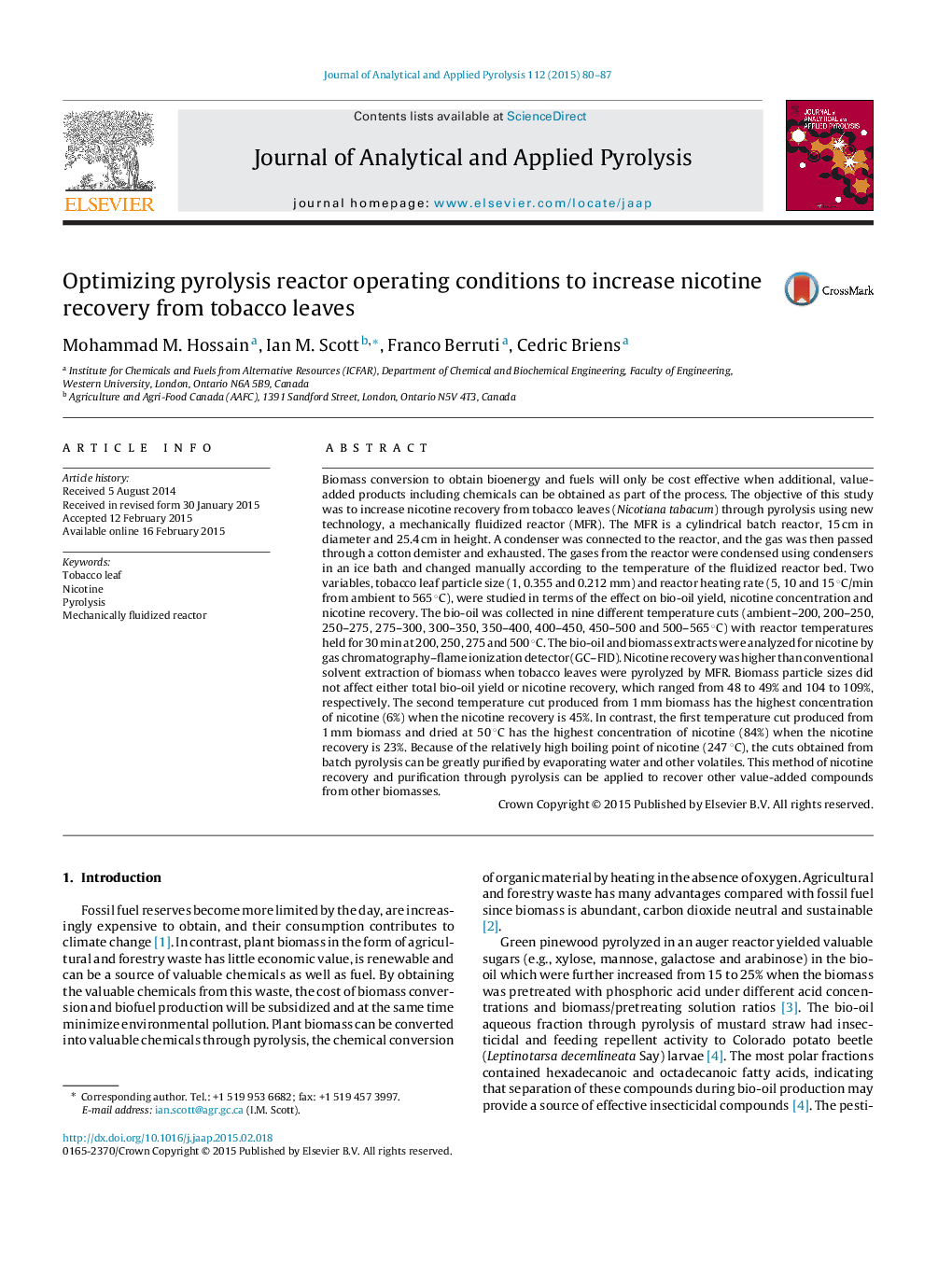| Article ID | Journal | Published Year | Pages | File Type |
|---|---|---|---|---|
| 1197220 | Journal of Analytical and Applied Pyrolysis | 2015 | 8 Pages |
•Nicotine recovery by pyrolysis was higher than solvent extraction of tobacco leaf.•The particle size of tobacco leaf has no effect on nicotine concentration and recovery.•The 200–250 °C temperature cut has the highest concentration of nicotine.•After drying, the ambient–200 °C temperature cut becomes the highest concentrated nicotine cut.•Nicotine recovery is reduced by drying.
Biomass conversion to obtain bioenergy and fuels will only be cost effective when additional, value-added products including chemicals can be obtained as part of the process. The objective of this study was to increase nicotine recovery from tobacco leaves (Nicotiana tabacum) through pyrolysis using new technology, a mechanically fluidized reactor (MFR). The MFR is a cylindrical batch reactor, 15 cm in diameter and 25.4 cm in height. A condenser was connected to the reactor, and the gas was then passed through a cotton demister and exhausted. The gases from the reactor were condensed using condensers in an ice bath and changed manually according to the temperature of the fluidized reactor bed. Two variables, tobacco leaf particle size (1, 0.355 and 0.212 mm) and reactor heating rate (5, 10 and 15 °C/min from ambient to 565 °C), were studied in terms of the effect on bio-oil yield, nicotine concentration and nicotine recovery. The bio-oil was collected in nine different temperature cuts (ambient–200, 200–250, 250–275, 275–300, 300–350, 350–400, 400–450, 450–500 and 500–565 °C) with reactor temperatures held for 30 min at 200, 250, 275 and 500 °C. The bio-oil and biomass extracts were analyzed for nicotine by gas chromatography–flame ionization detector (GC–FID). Nicotine recovery was higher than conventional solvent extraction of biomass when tobacco leaves were pyrolyzed by MFR. Biomass particle sizes did not affect either total bio-oil yield or nicotine recovery, which ranged from 48 to 49% and 104 to 109%, respectively. The second temperature cut produced from 1 mm biomass has the highest concentration of nicotine (6%) when the nicotine recovery is 45%. In contrast, the first temperature cut produced from 1 mm biomass and dried at 50 °C has the highest concentration of nicotine (84%) when the nicotine recovery is 23%. Because of the relatively high boiling point of nicotine (247 °C), the cuts obtained from batch pyrolysis can be greatly purified by evaporating water and other volatiles. This method of nicotine recovery and purification through pyrolysis can be applied to recover other value-added compounds from other biomasses.
